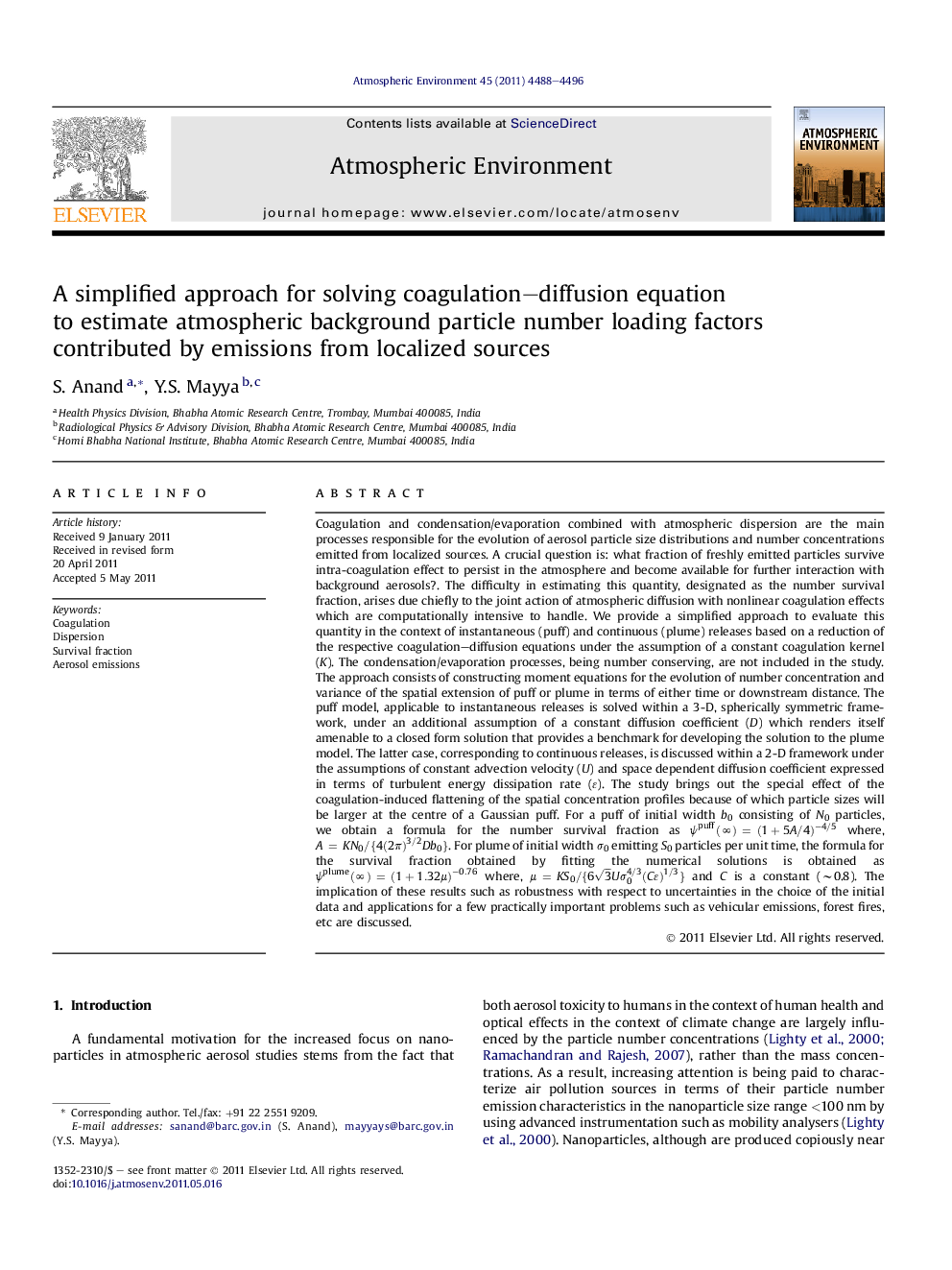| Article ID | Journal | Published Year | Pages | File Type |
|---|---|---|---|---|
| 4439676 | Atmospheric Environment | 2011 | 9 Pages |
Coagulation and condensation/evaporation combined with atmospheric dispersion are the main processes responsible for the evolution of aerosol particle size distributions and number concentrations emitted from localized sources. A crucial question is: what fraction of freshly emitted particles survive intra-coagulation effect to persist in the atmosphere and become available for further interaction with background aerosols?. The difficulty in estimating this quantity, designated as the number survival fraction, arises due chiefly to the joint action of atmospheric diffusion with nonlinear coagulation effects which are computationally intensive to handle. We provide a simplified approach to evaluate this quantity in the context of instantaneous (puff) and continuous (plume) releases based on a reduction of the respective coagulation–diffusion equations under the assumption of a constant coagulation kernel (K). The condensation/evaporation processes, being number conserving, are not included in the study. The approach consists of constructing moment equations for the evolution of number concentration and variance of the spatial extension of puff or plume in terms of either time or downstream distance. The puff model, applicable to instantaneous releases is solved within a 3-D, spherically symmetric framework, under an additional assumption of a constant diffusion coefficient (D) which renders itself amenable to a closed form solution that provides a benchmark for developing the solution to the plume model. The latter case, corresponding to continuous releases, is discussed within a 2-D framework under the assumptions of constant advection velocity (U) and space dependent diffusion coefficient expressed in terms of turbulent energy dissipation rate (ɛ). The study brings out the special effect of the coagulation-induced flattening of the spatial concentration profiles because of which particle sizes will be larger at the centre of a Gaussian puff. For a puff of initial width b0 consisting of N0 particles, we obtain a formula for the number survival fraction as ψpuff(∞)=(1+5A/4)−4/5ψpuff(∞)=(1+5A/4)−4/5 where, A=KN0/{4(2π)3/2Db0}A=KN0/{4(2π)3/2Db0}. For plume of initial width σ0 emitting S0 particles per unit time, the formula for the survival fraction obtained by fitting the numerical solutions is obtained as ψplume(∞)=(1+1.32μ)−0.76ψplume(∞)=(1+1.32μ)−0.76 where, μ=KS0/{63Uσ04/3(Cɛ)1/3} and C is a constant (∼0.8). The implication of these results such as robustness with respect to uncertainties in the choice of the initial data and applications for a few practically important problems such as vehicular emissions, forest fires, etc are discussed.
Graphical abstractFigure optionsDownload full-size imageDownload high-quality image (113 K)Download as PowerPoint slideHighlights► We examine the importance of coagulation process in dispersing aerosol puffs and plumes near emission sources. ► We propose simple formulae for ultimate survival fraction and number loading factors for puff and plume releases. ► The study demonstrates robustness of the ultimate particle loading rates with respect to the initial data, for large scale emissions.
